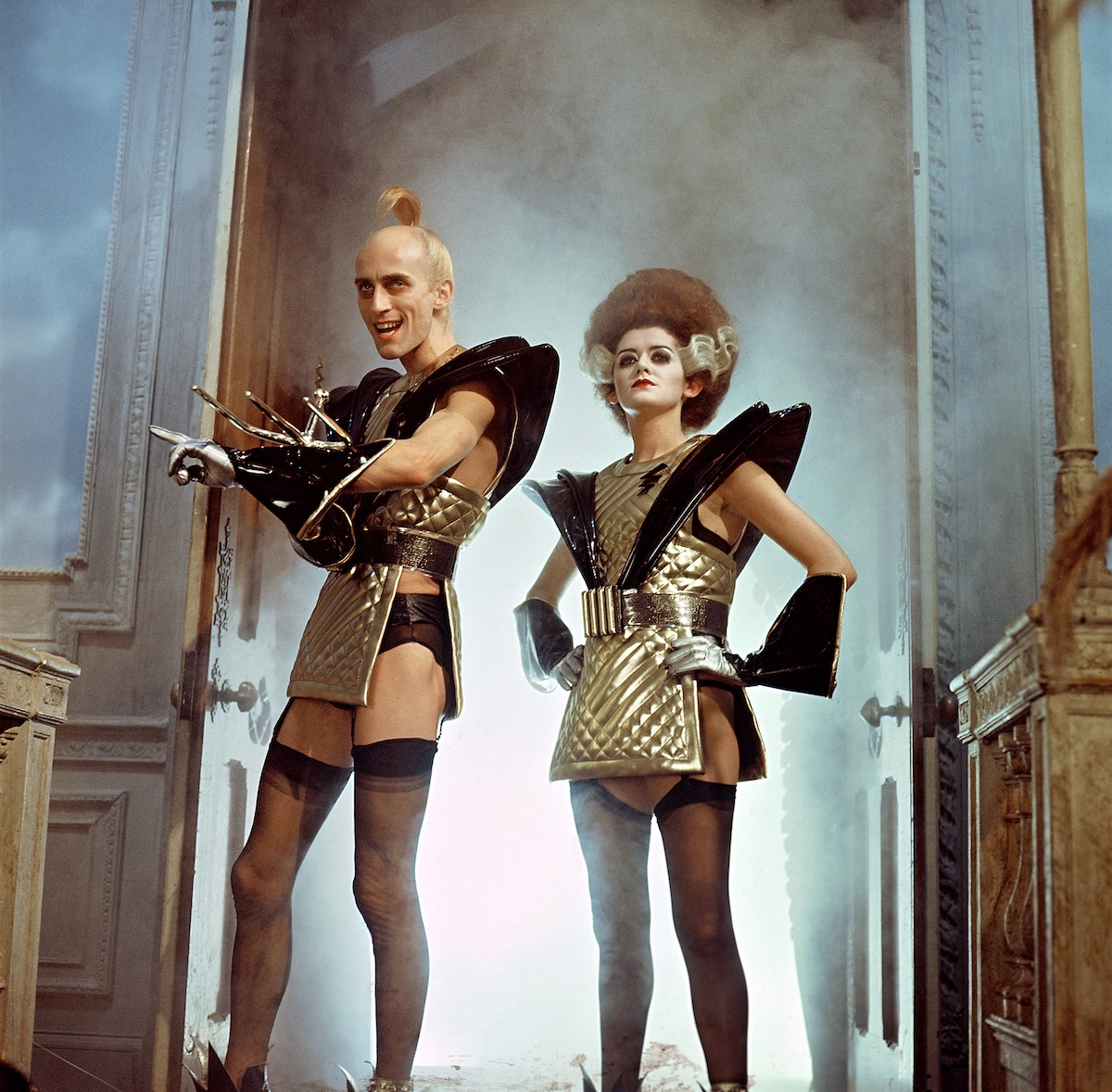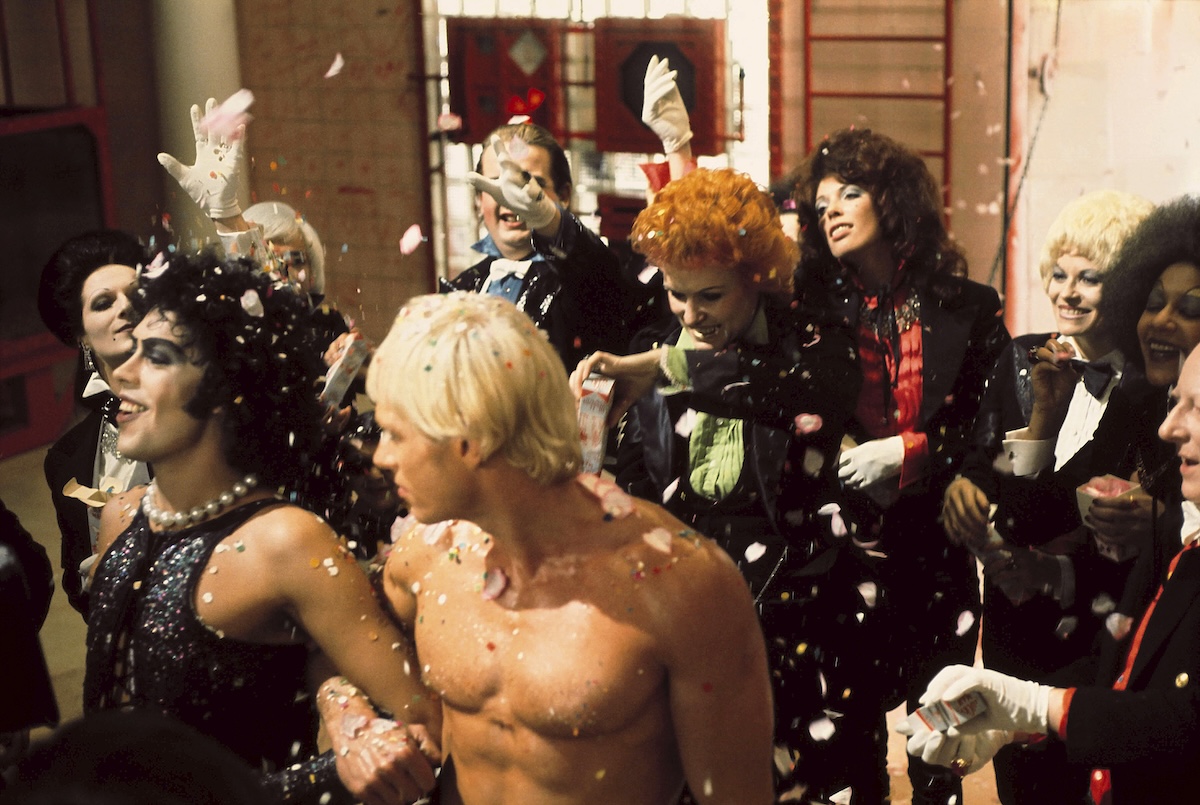There was a stretch in 1990 when our Saturdays belonged to midnight showings of The Rocky Horror Picture Show. My friends and I would don our best bondage gear and join the long queue outside the Nuart Theatre in West Los Angeles, waiting in “anticipation” to belt out the cult musical’s songs while performing the perfectly choreographed moves passed down by generations of devotees. We shouted insults at the screen in unison with the rest of the audience. We left the theater buzzing, a little feral, and more than a little in love with Tim Curry’s Dr. Frank-N-Furter. Decades later, when a classmate in my library graduate program called me Magenta, I felt an instant kinship. That’s how it always is with Rocky Horror shadow casters.
This year marks The Rocky Horror Picture Show’s 50th anniversary, or “Transylversary,” and the film feels more culturally alive than ever. Celebrations are taking place worldwide, from special screenings to conventions featuring members of the original cast. Among the most coveted commemorations is Mick Rock Rocky Horror: A Behind-the-Scenes Look at the Cult Classic.
The late Mick Rock, known as “the man who shot the ’70s,” immortalized David Bowie, Iggy Pop, Lou Reed, and countless others with his lens, shaping their iconic images. Over his career, he published 20 books, hosted Ovation’s On the Record with Mick Rock, and was the subject of the 2016 documentary Shot! The Psycho-Spiritual Mantra of Rock.
Rock’s widely recognized talent went beyond the music world. Director Jim Sharman invited him to the Rocky Horror set, where he not only captured key moments but also photographed the cast in intimate, impromptu shoots. Those sessions, according to some actors, even helped them discover aspects of their characters. Just as Rock revealed the ineffable essence of his musician subjects, he did the same for the extraordinary individuals who made Rocky Horror timeless.
Those photos are collected in Mick Rock Rocky Horror, meticulously assembled by Rock’s widow, Pati, his partner of more than 40 years. “When you’re with an artist, especially a photographer, I’ve been a model, a costume designer, I’ve done the makeup on some guy in a band, I built his first website,” Pati says. “Mick was a lone ranger in a lot of ways. He had all that experience. He had an amazing eye. When he did a book, he had a vision for not just the photos but he could write. We collaborated on a lot of things over our relationship. I’ve been by his side for almost 20 books.”

The 258-page coffee table Mick Rock Rocky Horror has contents are so vibrant, it feels like they’re three-dimensional. There are posed shots, candid shots, playful ones that are clearly just between the characters and Rock, Curry’s images, in particular, seduce right off the page. There are also Polaroids, contact sheets—which Pati says are her favorite parts—and behind-the-scenes images that no matter how many times you see the film, you would never be able to imagine.
“Mick could be a little flippant—just a little bit—but he appreciated his time on the set,” says Pati. “I understand he grabbed people when he could and pulled them aside to take his special pictures of them that had nothing to do with a shot from the film. He would get Nell and Patricia together. He would get Tim and Nell just goofing around. He was paid nothing, but he would say, ‘Pati, I own the film. I own the pictures.’ He was very happy to be part of that. I think he was just thrilled to be there.”
These images first emerged in the 2005 German publication, Rocky Horror, which also included a poetic foreword by Richard O’Brien (he wrote the Rocky Horror musical stage show in 1973 and co-wrote the screenplay), and Rock’s own reflections, which take you into the heart of his experience of that time. These are interspersed with portraits of Queen, Brian Eno, Peter Gabriel, and Bowie.

What sets Mick Rock Rocky Horror apart are the sections devoted to each cast member, as well as director Jim Sharman, producers Lou Adler and Michael White, costume designer Sue Blane, and makeup artist Pierre La Roche. Exclusive 2024 interviews bring new insight, with Curry’s vivid recollections standing out. “Everyone was very generous,” says Pati, crediting writer Tim Mohr for contributing his own essay and compiling both new and archival interviews with Patricia Quinn (Magenta), Little Nell Campbell (Columbia), and Adler. “It was very special that they did that for me.”
The book also sprinkles in reflections from artists deeply influenced by Rocky Horror: Shepard Fairey, Peaches, Joan Jett, Courtney Love, and Billy Corgan—who notes, “Mick’s photography made beautiful work of the lost people, the set asides, and those who’d never have been models or on the covers of magazines; except when presented as freaks and nothing more”—and fashion designer John Varvatos, who observes, “It married theatricality to the danger of rock ’n roll. At the same time, it felt authentic throughout the story and wardrobe.”
Connected to the book’s publishing are two exhibitions in New York and in Los Angeles later this year. Says Pati, “You really develop an understanding, a real perspective, on the whole history of this movie that flopped and then was resurrected by a generation, and became this incredible cultural thing.”
→ Continue reading at Spin
